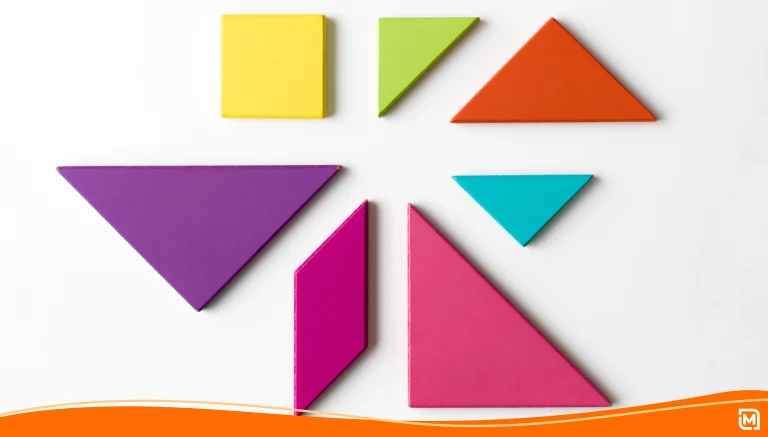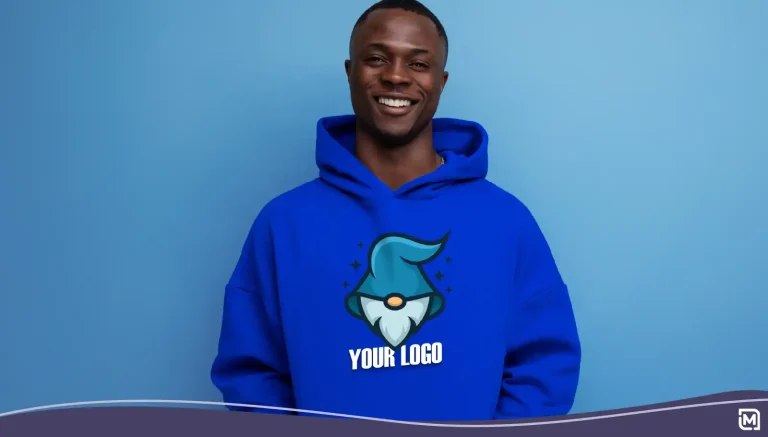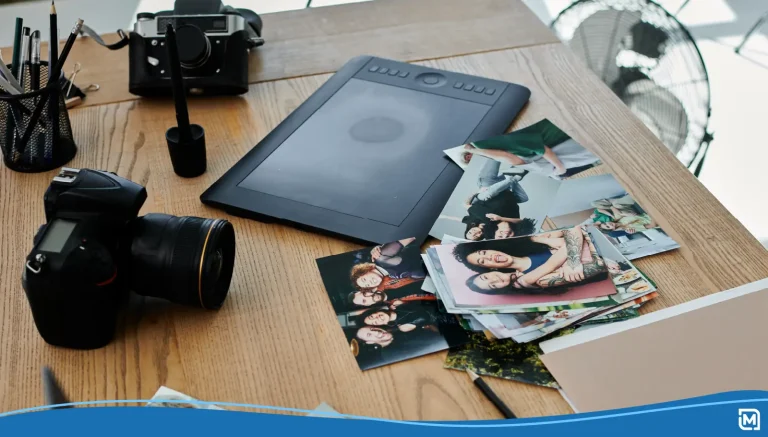Ready to launch your company? Do you have the right logo to go with it?
The importance of a logo is undeniable because this one image creates brand awareness, marketing opportunities, and communicates your company’s message to the world. With so much responsibility leaning on your logo, you have to get it right.
How do you know you designed the right logo? You can start by knowing which questions to ask.
12 Questions to Ask When Designing a Logo:
The following questions will help you determine if your logo suits all your needs for the company. Ask yourself these questions to determine if your design conveys the best attributes for your business. You can start by first noting down what your company represents and how your logo can embody this idea.
1. What Best Represents the Company?
Does your business focus on selling clothes to children? Are you an SEO firm for local online businesses? Does your company offer logistics and shipping services to local businesses?
Regardless of what your company focuses on, think of a single image that best represents it. Amazon sells almost everything under the sun and thus they incorporate an “A to Z” symbol in their logo.
FedEx is a delivery courier and so they have a directional arrow to represent this concept. A happy face could embody a business about children’s clothing and rising graphs or arrows work well for an SEO firm.
Most coffee shops utilize an image of a cup and steam to embody what they offer. Take cues from this and hunt down an ideal image, font, or color.
2. Which Logos Resonate with You?
Think you got a good idea of what your logo should be? Can’t come up with a great idea? The next step is to check other logos for inspiration.
These don’t have to be logos from companies in the same field. Take some time to look around and list down the most memorable logos you can think of.
Look for common elements and determine why these are the logos that clicked with you. They might all use a specific color you liked or a font that works for you.
You can then take these elements and incorporate them into your own logo.
3. Who are Your Competitors?
The purpose of a logo is to help people identify your brand, and with a quick glance, understand what your business offers. You can start researching which elements serve this function for your company by looking at your competitors.
Take for example coffee and tea shops. They often use an image of a cup with steam lines to indicate a hot drink. Others will add an image of a coffee bean or tea leaf to further imply they serve organic drinks.
Your next step is to take a step back and decide whether you want to follow your competitors’ trends or do something different. Do you want to follow their lead or hope to set yourself apart?
4. Which Colors Best Suit Your Brand?
Don’t pick colors out of a whim. Don’t pick colors solely because they’re your favorite. Keep in mind that when it comes to branding and businesses, colors convey a psychological impact on your target customers.
Choosing red as your logo’s primary color, for example, amplifies a theme of youth, aggressiveness, and bold decisions.
Green is often meant to symbolize peace and growth, which is why nature brands and eco-friendly logos utilize it the most.
Orange is a friendly and approachable color, which is why you’ll see shopping sites like Amazon use it a lot.
Pick a theme for your company, an emotion you want to convey, and then choose a color that best delivers that emotion to your audience with a single glance.
5. Which Font Best Fits Your Brand?
Ever wondered why every meme uses the same font? It’s because people often associate a specific emotion or idea with fonts.
Comic Sans, for example, is an informal font type that appears amateur and cheap. It was popular once, back in the mid-1990s, but has since faded out of popularity.
All you have to do is look at the competition and each industry as a whole. Newspapers, for example, often use Times, Helvetica, or Century Old Style for their printed products.
Shopping sites tend to combine font types like Source Sans Pro Regular with Crimson Text Regular.
6. Who is Your Target Audience?
Does your business target folks in need of mortgage refinancing? Do you sell products for medical students or do you offer HVAC repair services for big businesses in town?
One of the most important questions to ask when designing a logo is who your target audience is. By identifying who your audience is, you can eliminate logo elements you know won’t work and focus your design choices on those that do.
A logo designed for the elderly won’t work as well for kids under 20 and vice versa. Logos targeting kids should sport bright colors while a logo meant to target home buyers should be uniform, flat, and formal.
7. Is It Visible Regardless of Size and Color?
A common design mistake is to make a draft logo with a lot of colors and corners right from the start. It might look great but when you turn it into a black and white image or shrink it to fit a small icon box, the logo becomes unrecognizable.
This is why it’s crucial to design a logo in monochrome first. This guarantees you focus on its silhouette first. By doing this, you can ensure that the logo stays recognizable regardless of its size and color.
Why is this important? Keep in mind you may have to shrink your logo for letterheads or icon images.
You’re also not the only one going to use your logo. Advertising companies you partner with might feature your logo in monochrome or one, flat color for a poster. Bloggers might have to re-size your logo to fit the size of their blog posts.
8. Does It Feature a Memorable Design or Gimmick?
Some logos remain relevant 20 years or more after they launched. They achieve this not only by considering the questions on this list but by implementing a unique and memorable design philosophy.
Others use a catchy gimmick that makes their logo stand out from the competition. One common gimmick is to place a hidden image in a logo.
As mentioned, the arrow in Amazon’s logo runs from A to Z, symbolizing how they sell everything you can think of. Baskin Robbins, popular for their 31 flavors, uses a logo where parts of the B and R letters form the number 31.
The logo for Hershey’s Kisses has a hidden Kisses in the gap between the letters K and I. Ask yourself if your logo design features something like this.
Does your logo have a great gimmick, a hidden image, or at least something memorable people can latch on to?
9. Is the Design Appropriate?
You also have to ask if your logo design is appropriate across the board. This is why you should also have a translator in your design team. A logo design might seem innocent in English but it could be offensive in another language.
A logo also shouldn’t have any offensive imagery. Some logos appear innocent but due to the lack of insight, the designers failed to see hidden inappropriate imagery that others might see.
A popular example of an inappropriate logo is the 1973 logo for the Archdiocesan Youth Commision. Its original purpose was to showcase an adult guiding a child but the design also hints of a child giving a sexual favor to a priest.
There’s also the logo of Kids Exchange which, due to the lack of spacing and wrong font type, appeared to many as “Kid Sexchange.”
10. Does the Design Fit the Budget?
None of these tips and questions matter if your budget can’t afford an elaborate logo design.
What constitutes an expensive logo? Logos with bright colors and a big size are expensive to print. Exquisite designs might look nice but it’ll be expensive to hire artists each time you have to replicate it and draw it.
This makes simpler designs more appealing and affordable.
11. Is It Timeless?
Ask yourself if your logo design is trendy. If it is, you should consider redesigning it. Today’s trends will fade out and your logo may no longer seem relevant in years to come.
Look at the logo of FedEx or Coca-Cola. Those logos stayed throughout the years because of their timeless design. They are relevant regardless of the changing trends.
Aim to create a logo that follows this train of thought. It has to remain meaningful even if the market shifts.
12. Should I Hire a Professional Logo Designer?
The final and most important question is whether or not you should hire a logo designer. What does a logo designer do? They ask all of the above questions and attempt to create a logo for you, collaborating with you to make a design that perfectly embodies your business.
Yes, it might seem expensive to hire a designer. However, the investment pays off because you won’t have to keep redesigning every few years. You could end up with a logo design that sticks with your company for decades.
Design the Best Logo Today
These are the crucial questions to ask when designing a logo. By answering each one, you can cross out the design factors that are detrimental to your brand.
You can come up with the right image, font type, and color that works to broaden your brand’s identity and reach.
Don’t stop there!
Visit us today and we can guarantee to help design a logo. We also provide other guides to help you come up with the ideal design.
Don’t hesitate to rely on us to strengthen your brand with a memorable logo.



